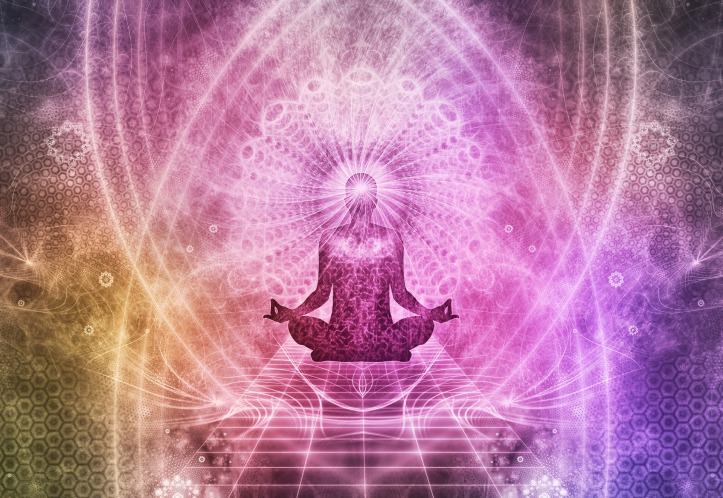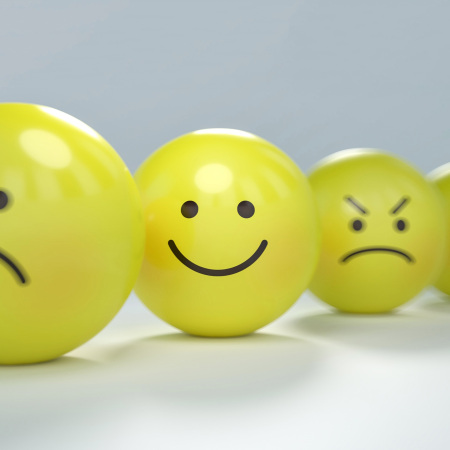Ever since the advent of the color televisions and the remote control, the fight for supremacy over this gadget has reigned high in a lot of households. Things have, however, changed as technology has invaded our homes like a virus. Personalized devices, Netflix on smartphones and high-speed internet speeds have ensured that we no longer fight for the erstwhile coveted gadget anymore. Maybe we should adopt this aspect of technology in controlling our emotions and state of mind too!
Negative and Positive Emotions

The way in which we use language effects the way we think as much as our thoughts influence our language. If you look at some of the common sentence formations that we use in everyday life, you will realize how we slowly tune our minds into thinking that it is the other persons fault. Consider some of these statements:
- He is annoying me
- He made me so angry that I shouted like a maniac
- His actions hurt me and made me cry
- He did such things that made me feel disgusted
- His lies make me frustrated
Each of these negative emotions are attributed to the ‘other’. These are common ways in which we use language and therefore start believing that the other person is responsible for our anger or hatred or frustration. On the other hand, look at some of the statements below:
- I love the way she looks at things
- I felt sympathetic towards the small child
- I am thankful for what I have
- I feel enthusiastic about meeting my sisters
Each of these positive emotions are attributed to the ‘self’. So, when we feel happy, enthusiastic, thankful or any other positive emotion, we attribute it to our capabilities of feeling those emotions. Whereas, when we feel negative emotions, we unconsciously (or consciously) place the blame of the emotion on another person or the situation.
Is it the brains way of now accepting that it is harming its own body? Is it a blame game that is easier for us to accept? Is it a rationalization so that we can justify our negative emotions and negative energy which we know if harmful for all those around us?
Whose Emotion is it Anyway?
We have very conveniently convinced ourselves that the negative emotions that we have are caused by things outside of us. It might require us to take a hard look at this and revisit the way in which we use language. That can be a great starting point in moving towards higher responsibility of your own emotions. Start to say:
- I got angry at the way he behaved
- I felt hurt because she paid less attention to me
- I am annoyed at the arrangements at the event
This is however, just the start. It is only a way in which you can start taking onus of your own emotions. This first step can help us realize that the emotions are ours, they are caused by our own thoughts and that no external stimulus is responsible for them.
Let’s take a detour and review an example, a story that some of you may have heard.
A group of ladies was having lunch in a restaurant. Suddenly, one of the ladies saw a cockroach on her shoulder and screamed out loud. She jumped knocked off the chair and caused a huge commotion. The cockroach jumped and landed on another lady. She too was terrified of the insect and tried to get her friend to squat the insect. After a few more such jumps that resulted in complete confusion and mayhem, the cockroach landed on the waiter’s arm. He calmly picked up the cockroach using his long antennas and threw him outside the restaurant.
The cockroach was the same. The reaction of the people was different. The reaction depended on factors specific to the individual. The same insect caused different feelings in different people. Some were scared, some disgusted, some angry and some remained calm.
How can the same cockroach be responsible for different reactions? All that the creature did was land on different people. Each person reacted to the cockroach based on how they feel about the cockroach; something that has nothing to do with the cockroach.
The Remote Control of Emotions

The different situations that come in our lives can be compared to the cockroach (especially the ones that we feel are undesirable). It is completely up to us to decide how we want to deal with those. Do we want to get angry about them? Do we want to get frustrated about the situation? Do we want to scream for help? Do we want to complain? Or do we simply want to remain calm and find a way out, if the situation is undesirable.
The analogy does not apply to negative situations alone. It also applies to positive circumstances. When we have a favorable situation, do we want to be thankful about it, enthusiastic about it or do we want to complain how things are still not good enough. But then, we are only to happy to take the responsibility of our positive emotions.
If we realize that we are the ones that cause ALL emotion within ourselves, we can simply choose to be peaceful, happy, calm and enthusiastic. It is actually that simple. Some great things to tell yourself when you fine your self in trying circumstances (and these are different for different people):
- I choose to stay calm / be happy
- I have the remote control of my emotions in my hands
- No one else /nothing else controls how I feel
- And I decide to feel happy / peaceful / calm / enthusiastic / grateful
Take the remote control of your emotions in your own hands today!


Very apt and worth reading. I can relate with it. Over the years I have tried to keep the remote of my emotions in my hand but not fully succeeded. Still trying and getting closer.
Enjoyed reading. Very good
I guess it is the constant reminder to self that negative emotions only harm us and that we have the ability to control our own emotions – whatever be the circumstances and external factors.
True true true.
I thought I knew all but NO.
A long way to go